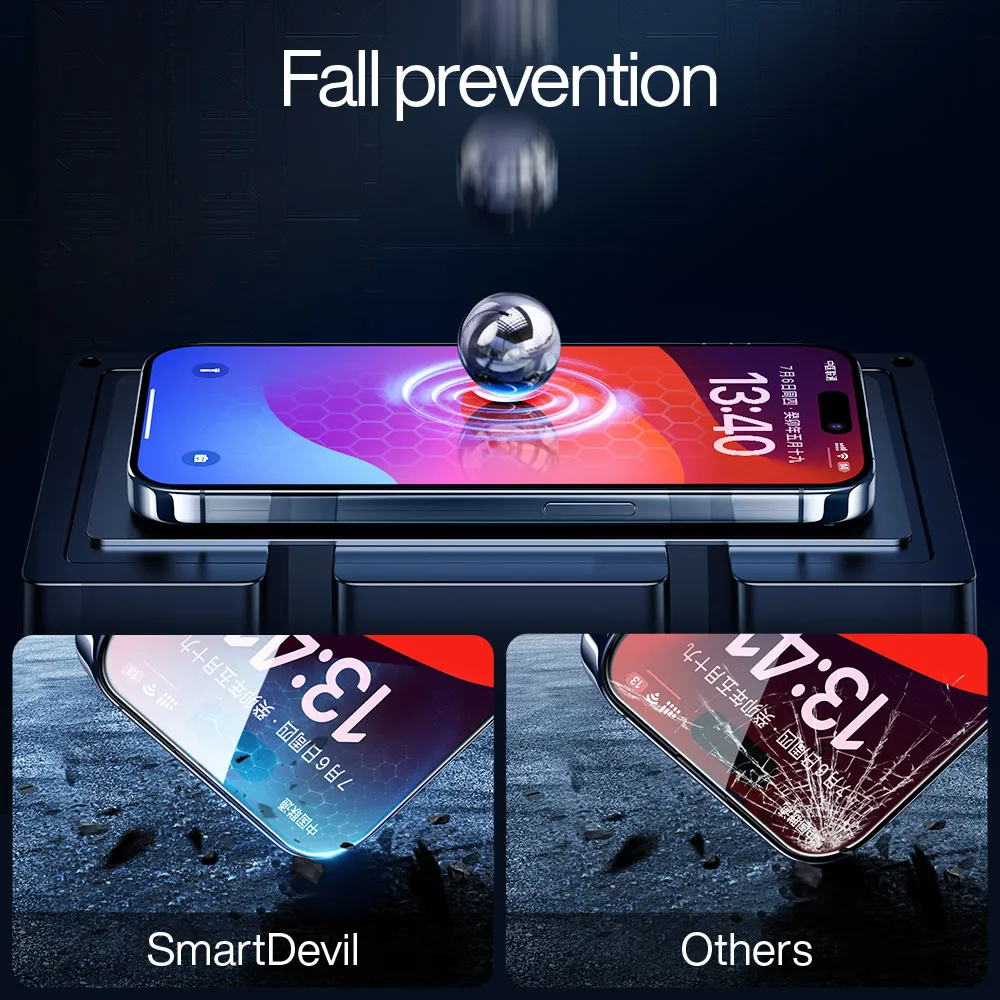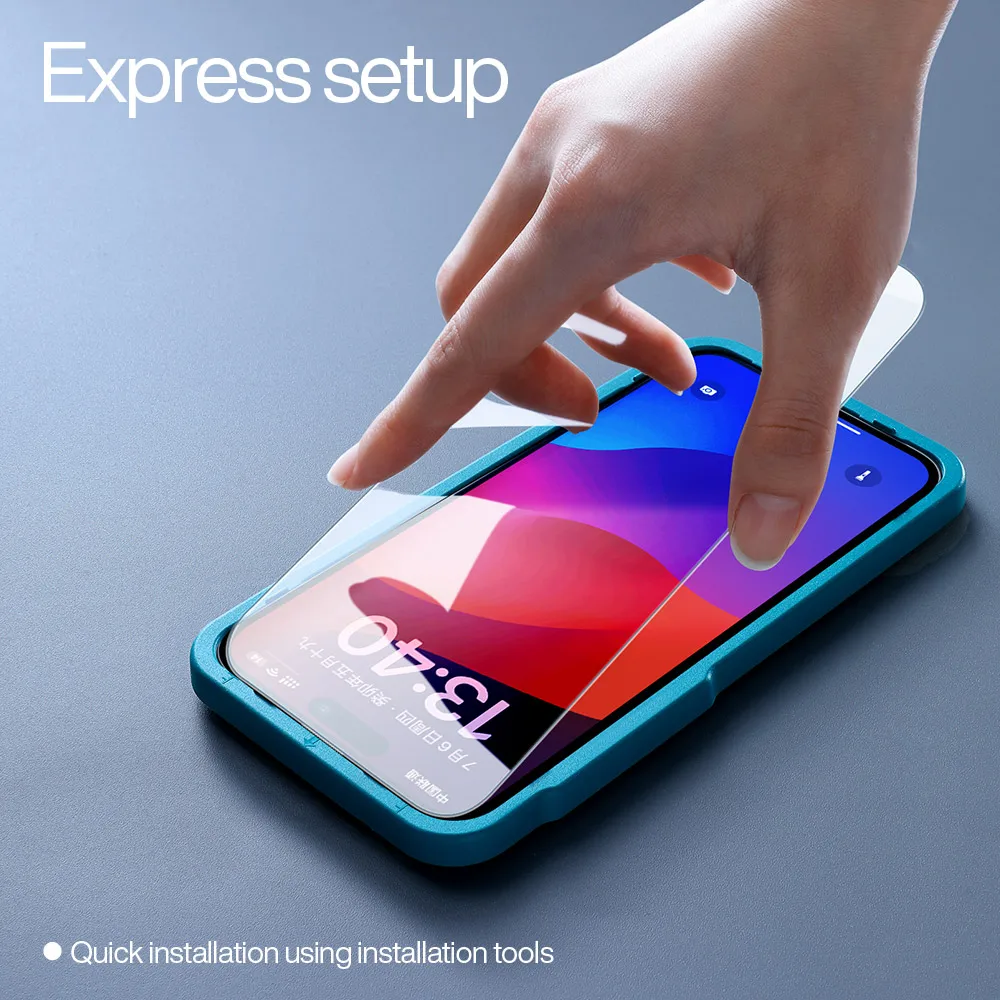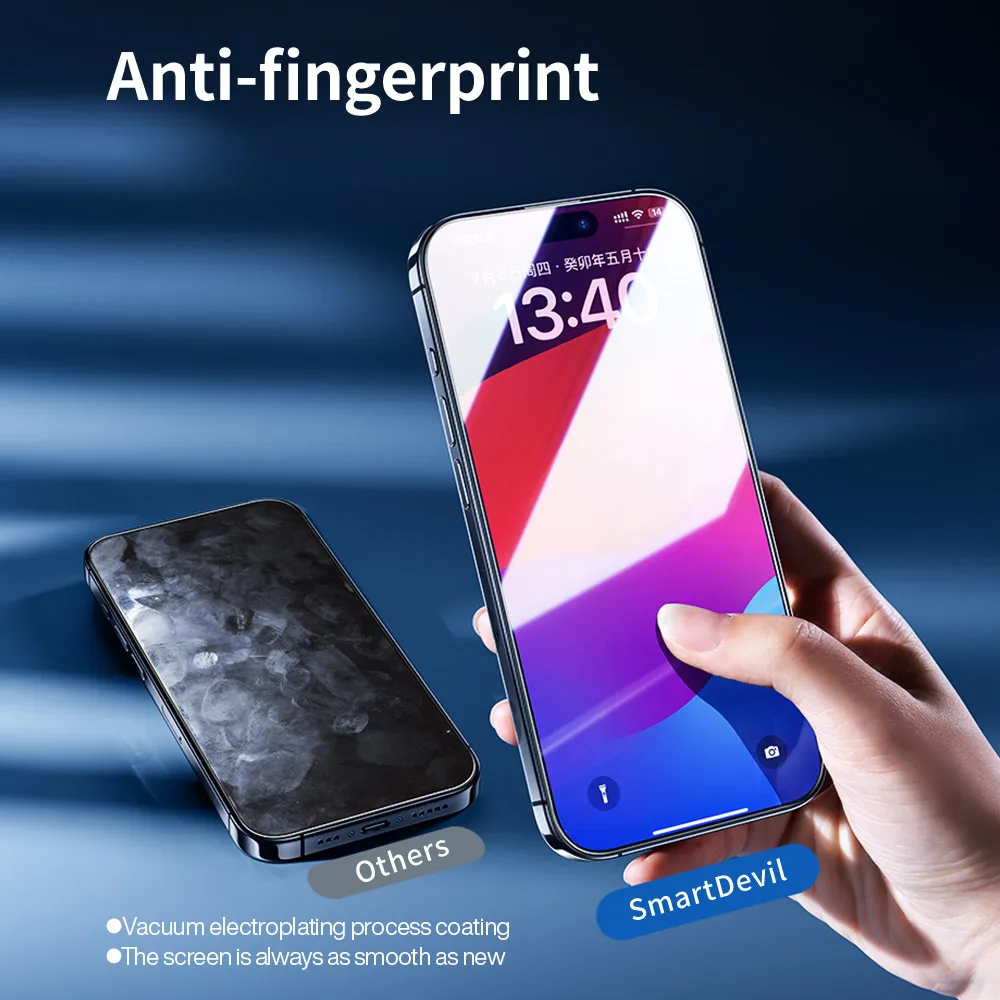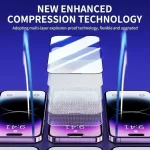Introduction to Screen Protector Maintenance
Screen protectors, such as tempered glass, are essential accessories for safeguarding your mobile devices. These thin, transparent pieces can extend the life of your device’s screen by preventing scratches, dings, and smudges. However, maintaining your screen protector involves more than just slapping them on and forgetting about them. Proper maintenance ensures they continue to do their job effectively without affecting the device’s functionality or visibility.
From time to time, dust, fingerprints, and other residues accumulate on the screen protector. This can obscure the screen’s clarity and reduce the responsiveness of touch-sensitive screens. Therefore, knowing how to clean a screen protector properly is crucial. It not only helps in maintaining the aesthetic appeal of your devices but also contributes to their longevity. The process of cleaning should be gentle yet effective to avoid damaging both the protector and the screen itself.
In the following sections, we will explore common issues that demand the cleaning of screen protectors, introduce a step-by-step guide on how to effectively clean tempered glass protectors, and discuss best practices for dealing with the adhesive side. We’ll also cover what should be avoided during cleaning to ensure your screen protector remains in top condition.
Identifying Common Screen Protector Issues
Screen protectors, like tempered glass, can run into several issues affecting their performance. Common problems include accumulation of dust, fingerprints, and smudges. These not only obscure visibility but can also decrease touch sensitivity. Additionally, bubbles may appear beneath the protector, often caused by improper application or debris trapped during installation.
Another frequent concern is scratches on the protector itself. While designed to bear the brunt of daily wear and tear, they can still sustain damage which may impair their protective abilities. In some cases, the adhesive side of the screen protector might also gather dirt or lose its stickiness, resulting in peeling edges or the protector not adhering well to the screen.
Understanding these issues is step one towards maintaining the optimal functionality and clarity of your screen protector. In subsequent sections, we will guide you on how to address and resolve these common challenges while preserving the integrity of your device’s screen.

Step-by-Step Cleaning Guide for Tempered Glass Protectors
Follow this simple guide to clean your tempered glass screen protector and keep it clear:
Step 1: Dry Wipe
Sometimes, a dry microfiber cloth is enough. Gently wipe away dust and smudges.
Step 2: Diluted Dish Soap Solution
Mix dish soap with water in equal parts. You need a mild cleaner, not harsh chemicals.
Step 3: Gentle Circular Motions
Dip your microfiber cloth in the solution. Clean the screen in a circular motion.
Step 4: Dry and Polish
Finish by drying with a fresh cloth. Your screen protector should look spotless.
If dirt persists, repeat the process. Pay attention to how your touch screen responds. If sensitivity decreases, it’s often due to grime.
Ensure you avoid harsh chemicals like alcohol, which can strip protective coatings. Stick to soft cloths over abrasive tools to avoid scratches. With regular care, your tempered glass protector can last much longer, keeping your device’s screen immaculate and functional.
Best Practices for Cleaning the Adhesive Side
When cleaning the adhesive side of your screen protector, the key is to be gentle and precise. Here are the best practices to ensure you clean effectively without compromising the protector’s stickiness:
Use the Right Tools
Always start with soft tools. Use a microfiber cloth and isopropyl alcohol. Avoid harsh chemicals and abrasive materials. These can damage the screen protector and reduce its ability to stick to the screen.
Gentle Removal
Carefully peel off the screen protector from your device. Do it slowly to prevent stretching or tearing. Take your time to avoid damaging your device.
Dust Removal
Before using any liquid cleaners, try removing dust and dirt with a piece of sticky tape. Place the tape on the adhesive side and peel it off to lift away particles.
Mild Cleaning Solution
If you need to use a liquid, opt for diluted dish soap or a 70% isopropyl alcohol solution. Apply it sparingly to a cloth, not directly on the screen protector.
Wipe Gently
With your damp cloth, softly dab and wipe the adhesive side. Don’t rub too hard as this can cause damage. Be sure to reach all corners and edges.
Drying
After cleaning, let the screen protector air dry completely. Only reapply it when you’re sure there’s no moisture left.
Reapplication
Align the protector carefully and gently place it back on the screen. Press out any bubbles with a credit card or similar tool.
By following these steps, you can clean the adhesive side of your screen protector without harming its functionality. Remember, frequent maintenance can extend your screen protector’s life, but if the adhesive weakens, it might be time for a replacement.

The No-No’s of Screen Protector Cleaning
When tackling how to clean a screen protector, it’s just as important to know what to avoid to prevent damage. Here are some critical don’ts:
Harsh Chemicals and Cleaners
Stay away from strong cleaners like Windex or rubbing alcohol. These can strip away the oleophobic coating, reducing your screen protector’s resistance to smudges and making it harder to clean in the future. The oleophobic coating helps keep your screen clear and free from annoying fingerprint marks.
Abrasive Materials
Avoid using rough materials like dish sponges, scrubbers, or paper towels. These can scratch the surface of your screen protector. Scratches can not only make your screen look dirty but can also affect touch sensitivity and visibility. Instead, always use soft, gentle tools such as a microfiber cloth.
Excessive Force
Don’t press too hard when cleaning. Your screen protector is durable but not indestructible. Applying too much force can cause cracks or even damage the device’s screen. A light touch is sufficient to get rid of most dirt and fingerprints.
Direct Liquid Application
Never pour or spray liquid cleaners directly onto the screen protector. Excessive moisture can seep under the protector, causing bubbles and potentially harming your device. Instead, dampen a cloth and wipe gently.
Reapplication When Wet
Never reapply a screen protector when it’s still wet. Moisture can ruin the adhesive side, leading to peeling edges and a loss of protection. Allow the protector to air dry completely before you put it back on your phone’s screen.
Make sure to keep these no-no’s in mind when you’re cleaning your screen protector. Doing so will not only maintain the clarity and functionality of your screen protector but will also extend its life, keeping your device’s screen safe and looking like new.
Solutions for Stubborn Stains and Residues
Even with regular cleaning, some screen protectors may develop tough stains and residues. They can impair visibility and hinder touch sensitivity. Here is a strategy to tackle these challenging spots:
Identify the Stubborn Stain
First, pinpoint the type of stain. Is it a smudge, a sticky residue, or a built-up grime? Knowing this will dictate the right approach.
Make a Stronger Cleaning Solution
Create a stronger solution for tougher stains. Mix a drop of dish soap with water. Make sure it’s not too soapy.
Soft Cloth with Gentle Motions
Use a microfiber cloth dipped in the solution. Gently rub the tough spots in a circular motion.
Rinse If Necessary
If allowable, lightly rinse the area with water. Avoid getting moisture under the protector.
Air Dry Completely
Let the screen protector dry thoroughly. Ensure it’s fully dry before reattaching it to the screen.
Repeat If Needed
If the first attempt does not work, repeat the process. Sometimes it may take a few tries.
With these reliable methods, you can keep your screen protector free of stubborn stains and residues. Regular upkeep can prevent these issues from developing in the first place.

Maintenance Tips to Prolong Protector Life
To extend the life of your screen protector, follow these tips:
Choose Quality
Pick a high-quality protector; they resist scratches better and last longer.
Regular Cleaning
Clean according to the steps provided regularly to prevent build-up.
Smooth Application
When you apply, ensure no bubbles or dust; this secures better adhesion.
Avoid Direct Sunlight
Exposing your protector to intense sunlight can weaken the adhesive over time.
Be Gentle
Always be gentle when cleaning or touching the screen. Rough handling can wear out the protector faster.
Don’t Delay Replacement
Replace your protector if you notice cracks or it starts peeling off. Delays can risk your device’s screen.
Keep It Dry
Moisture can damage adhesives. Always dry the protector thoroughly if it gets wet.
By performing regular maintenance, you can ensure your screen protectores remains effective for a longer period, thus providing uninterrupted protection to your device. Always keep in mind that while cleaning can address most issues, consistent care from day one helps avoid problems that lead to premature replacement.
When to Replace Your Screen Protector
Knowing when to replace your screen protector is crucial for maintaining your device’s safety and functionality. Despite regular cleaning and care, screen protectors do wear out and lose their effectiveness over time.
Visible Cracks and Scratches
If you notice significant cracks or deep scratches on your screen protector, it’s time for a replacement. These defects can’t protect your screen as effectively as an intact protector.
Peeling Edges
When the edges begin to peel or lift, the adhesive is failing. This compromises the protector’s ability to stay on the device, exposing your screen to potential damage.
Touch Sensitivity Issues
If touch response isn’t as swift or accurate as before, the screen protector might be to blame. A worn protector can affect touchscreen functionality.
Dirt or Dust Under the Protector
Sometimes, cleaning isn’t enough if dirt or dust is trapped under the protector during installation. In these cases, applying a new protector is the best solution.
Faded Oleophobic Coating
Over time, the oleophobic coating that prevents smudges may wear off. If fingerprints start to stick and are harder to clean, consider getting a new protector.
Regularly inspect your screen protectores for these signs and replace it when necessary to ensure your device remains in top condition. This proactive approach can save you from potential screen damage or costly repairs.


